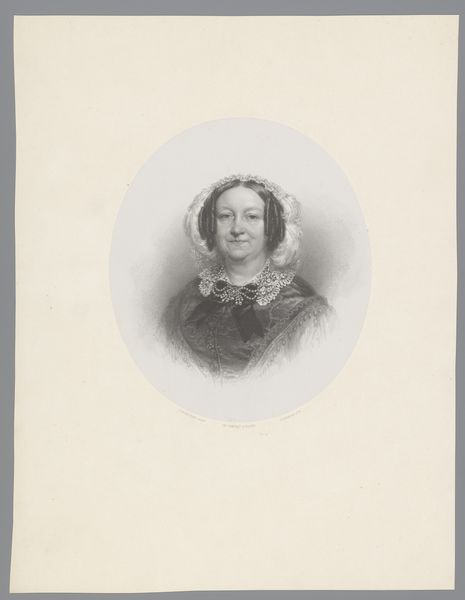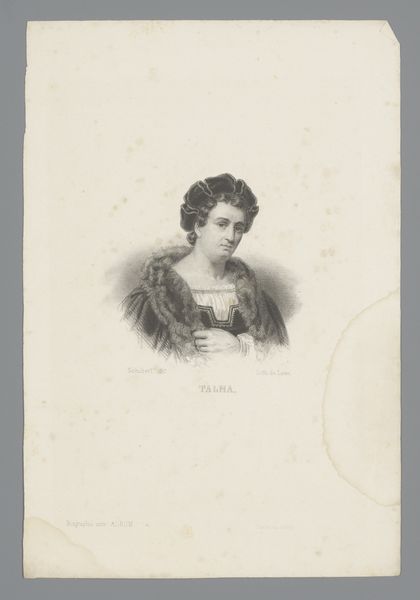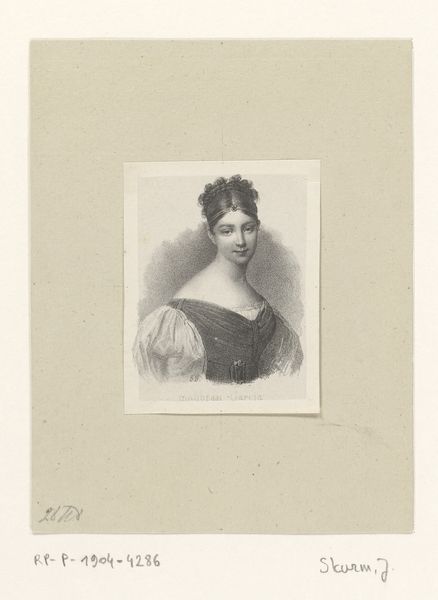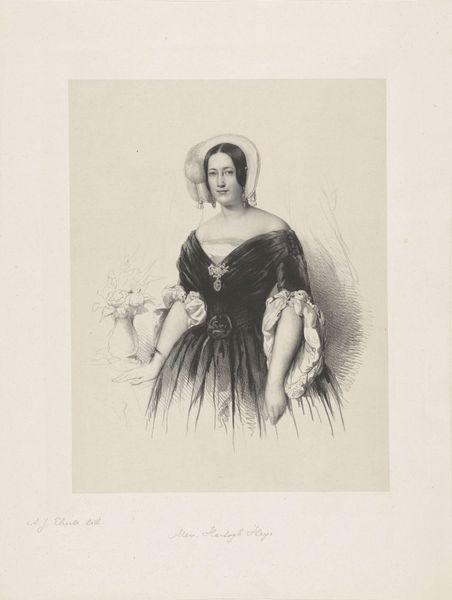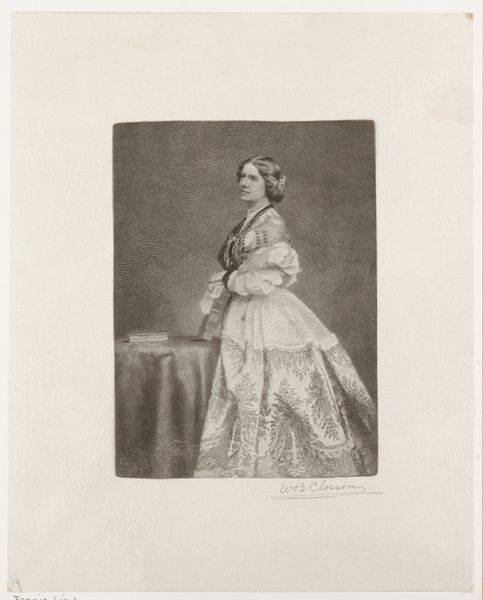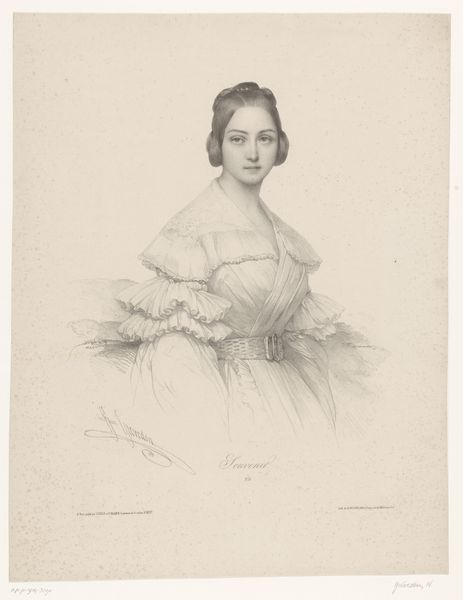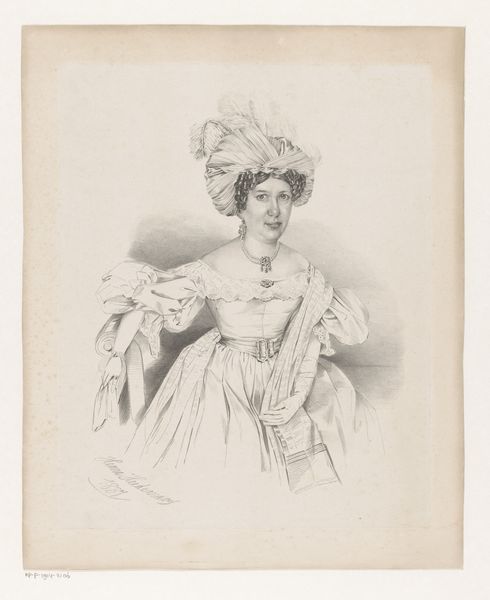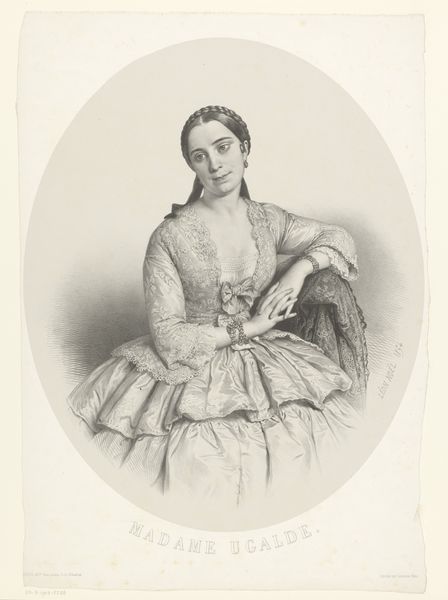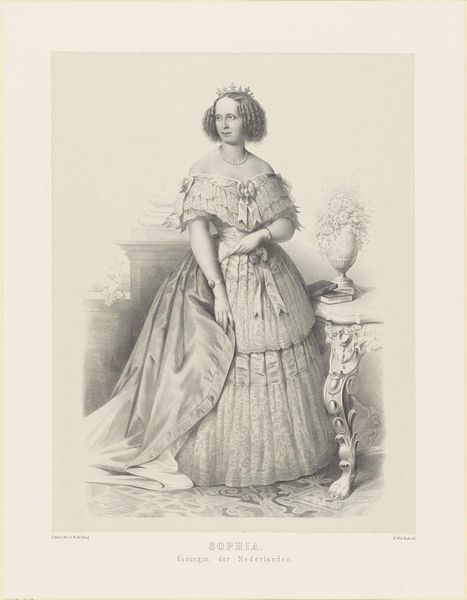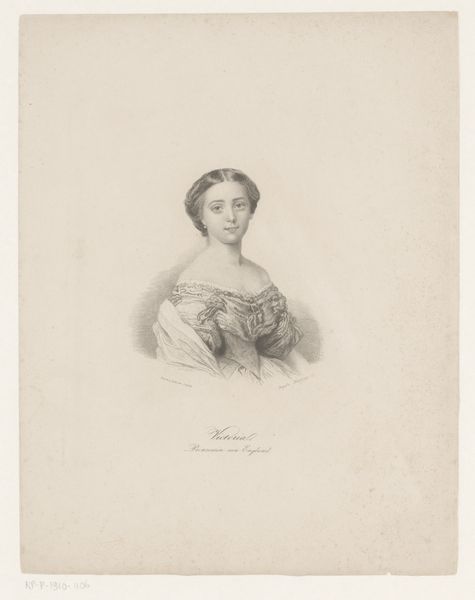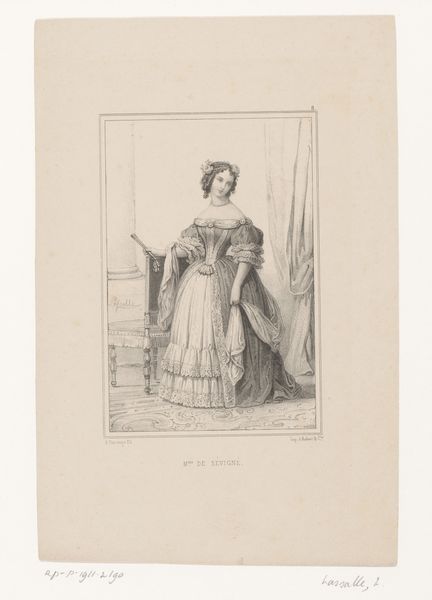
drawing, print, etching, paper, engraving
#
portrait
#
drawing
#
16_19th-century
# print
#
etching
#
pencil sketch
#
paper
#
engraving
#
realism
Dimensions: height 333 mm, width 264 mm
Copyright: Rijks Museum: Open Domain
Editor: This is Joseph Schubert’s "Portret van Rosa de Vries" from 1859, made using etching and engraving on paper. It's a lovely portrait, but it strikes me as quite formal and reserved. What do you see in this piece, especially regarding the imagery used? Curator: What strikes me immediately is the visual language surrounding Rosa de Vries. Consider the fan she holds – not merely an accessory, but a symbol. In 19th-century portraiture, fans often represented feminine virtues such as modesty, refinement, or discretion. Yet, they also possessed a dual nature, subtly suggesting coquetry or hidden messages, acting as a delicate screen between the subject and the world. Editor: That’s interesting! I hadn't thought about the fan that way. Curator: Indeed. Also observe how she's positioned, leaning slightly on what looks like a marble console table. Marble, with its connection to classical sculpture and architecture, suggests enduring values like sophistication, wealth, and timeless beauty. And that shawl—it evokes a sense of comfort, but its draped position could also signify societal constraints, literally cloaking her. These carefully chosen symbols build a complex narrative. Editor: So, it’s like Schubert is using these objects to communicate unspoken aspects of Rosa de Vries's identity and place in society? Curator: Precisely! It demonstrates how portraiture transcends mere physical representation. It becomes a coded visual statement that requires careful 'reading' of symbolic elements. The portrait offers insight into cultural memory of gendered identity and material status of women. Editor: I learned that a portrait could function like a language. Thank you! Curator: My pleasure! Recognizing the hidden meanings woven into artworks enhances our understanding of the past and present.
Comments
No comments
Be the first to comment and join the conversation on the ultimate creative platform.
